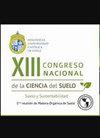RESISTANCE MECHANISMS OF ALUMINUM (Al3+) PHYTOTOXICITY IN CEREALS: PHYSIOLOGICAL, GENETIC AND MOLECULAR BASES
Revista De La Ciencia Del Suelo Y Nutricion Vegetal
Pub Date : 2008-01-01
DOI:10.4067/S0718-27912008000300006
引用次数: 18
Abstract
Aluminum (Al) toxicity is one of the main factors limiting crop productivity in acid soils around the world. In cereals, this problem can affect between 30 and 40% of crop yields. One way to reduce the toxic effect of Al is to neutralize the acidity with calcareous amendments. However, this practice is demanding and not very effective. An alternative is the search for genetic variability in the genome of cropping grasses and/or their wild relatives to resist Al. The development of biotechnology and molecular genetics approach has facilitated the understanding of the physiological, genetic and molecular bases in the process of ameliorating these species. This review presents the main physiological mechanisms of Al resistance and the genetic and molecular bases that explain the degree of resistance between different cereals species.谷物抗铝(Al3+)植物毒性机制:生理、遗传和分子基础
铝毒性是限制酸性土壤作物产量的主要因素之一。在谷物中,这个问题会影响30%到40%的作物产量。减少铝的毒性作用的一种方法是用钙质改进剂中和铝的酸性。然而,这种做法要求很高,而且不是很有效。另一种方法是在作物和/或其野生近缘种的基因组中寻找遗传变异来抵抗Al。生物技术和分子遗传学方法的发展促进了对这些物种改良过程中生理、遗传和分子基础的理解。本文综述了铝抗性的主要生理机制以及不同谷物品种间铝抗性程度的遗传和分子基础。
本文章由计算机程序翻译,如有差异,请以英文原文为准。
求助全文
约1分钟内获得全文
求助全文

 求助内容:
求助内容: 应助结果提醒方式:
应助结果提醒方式:


